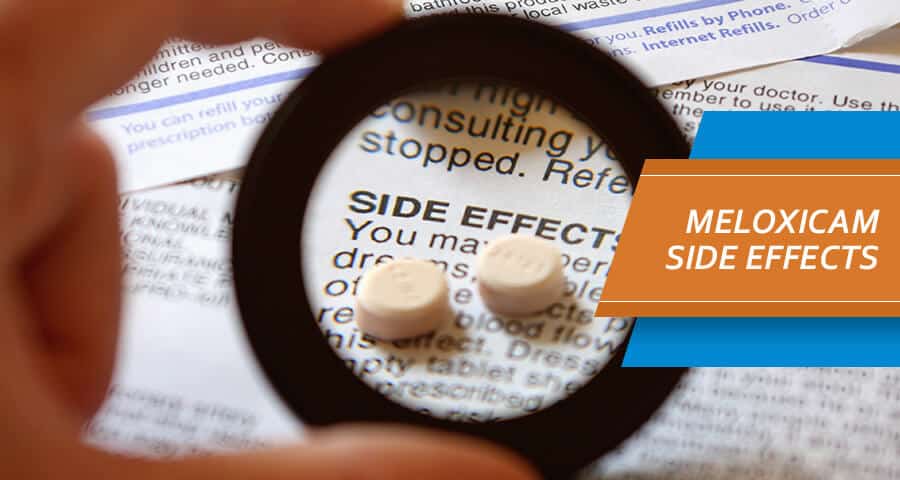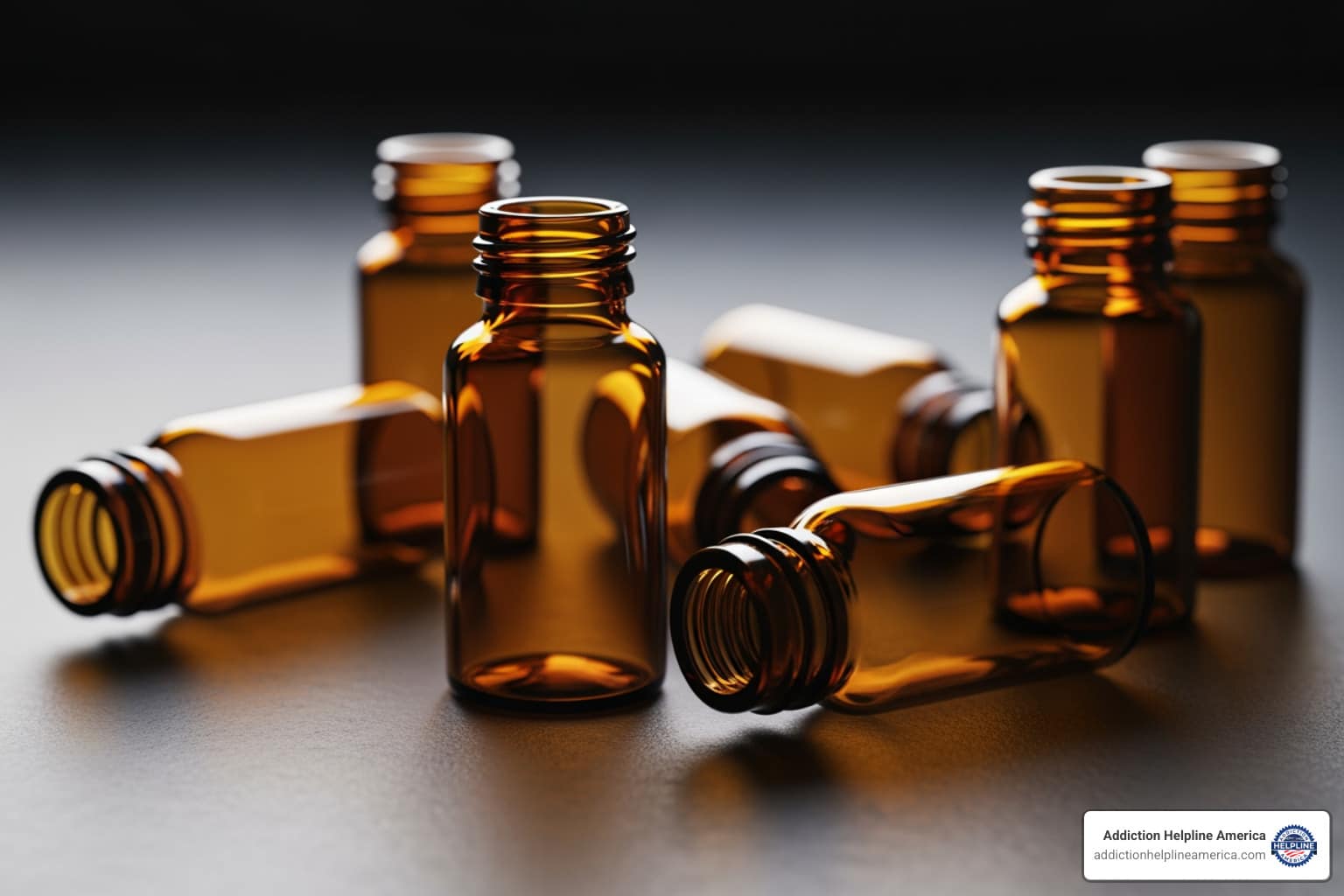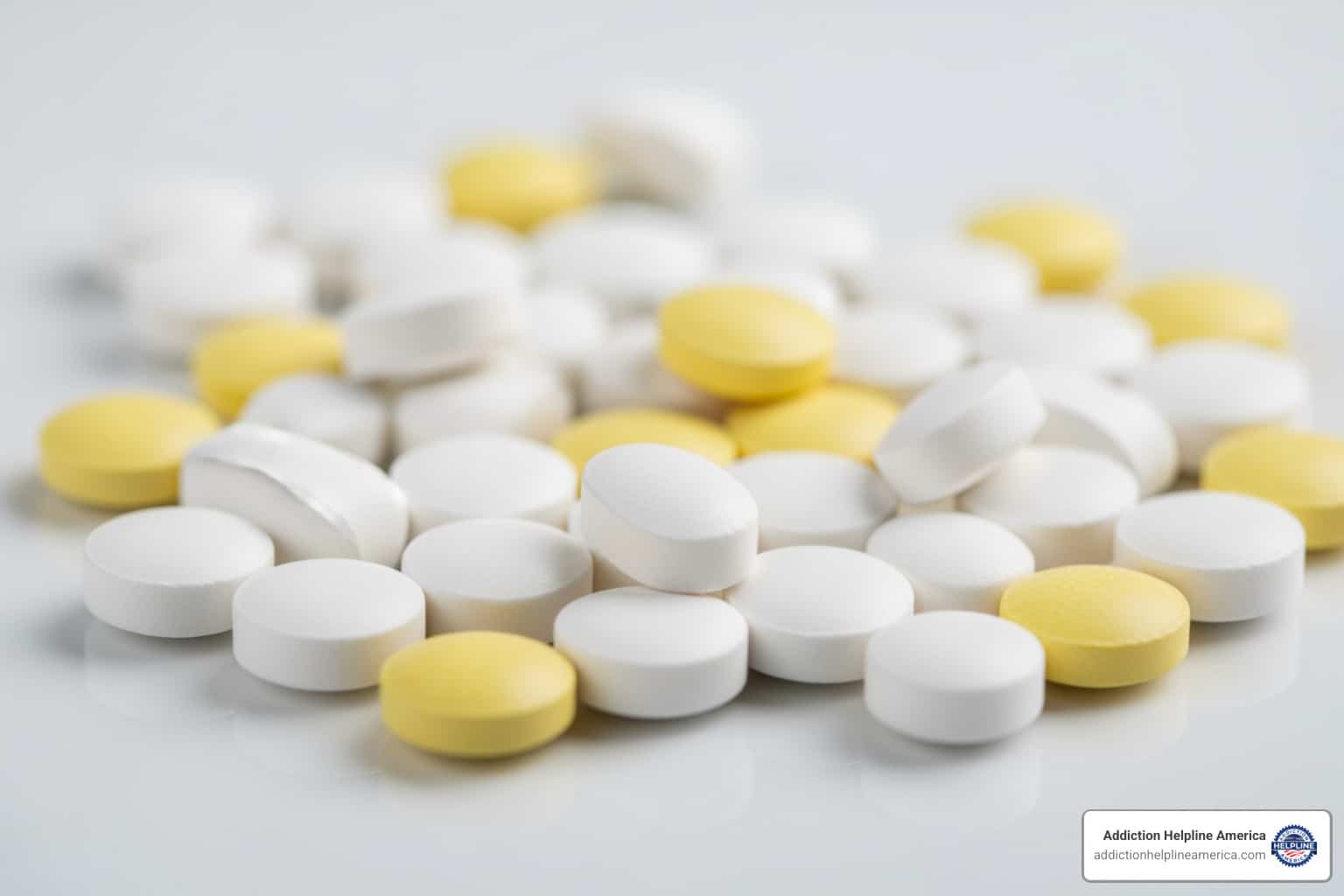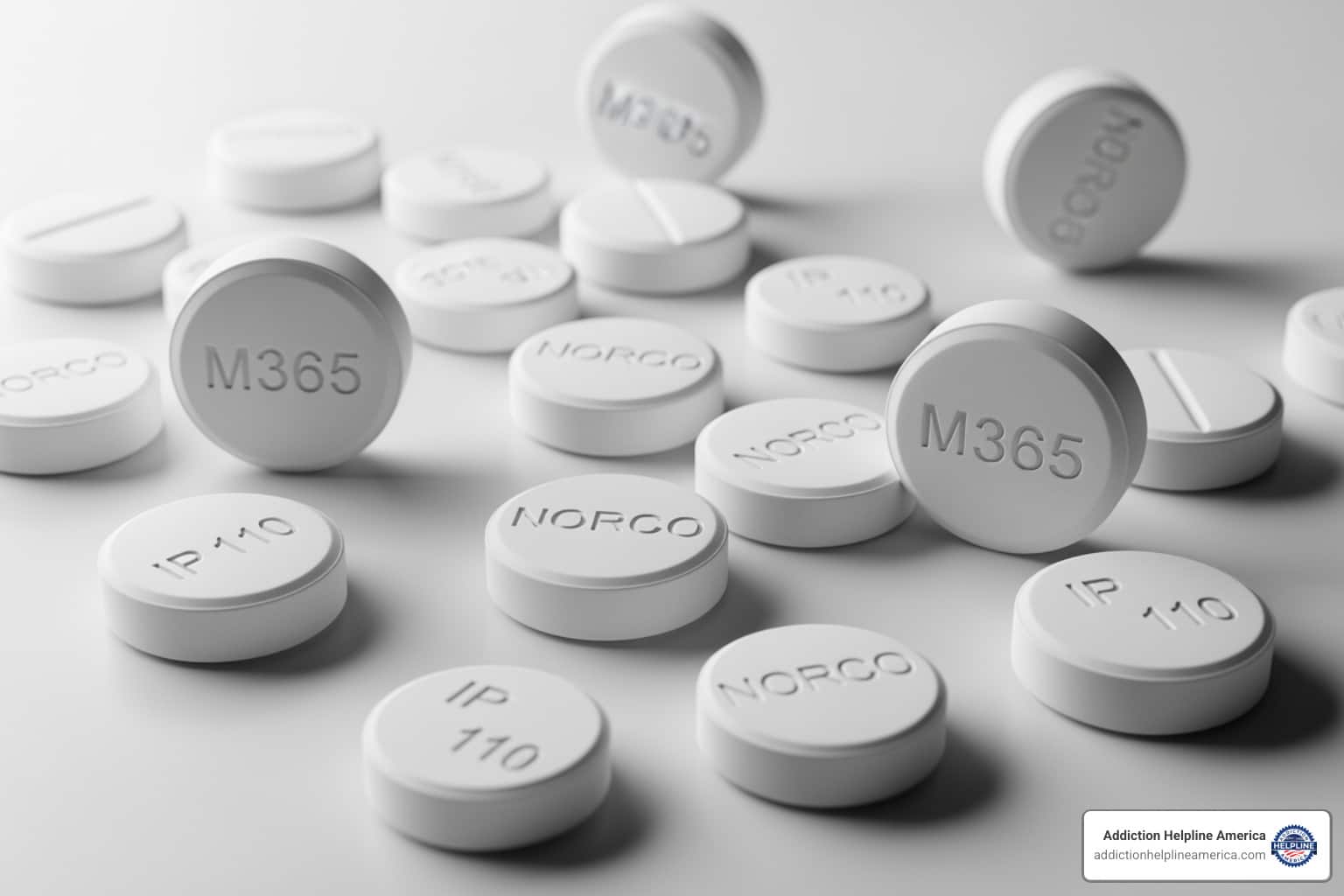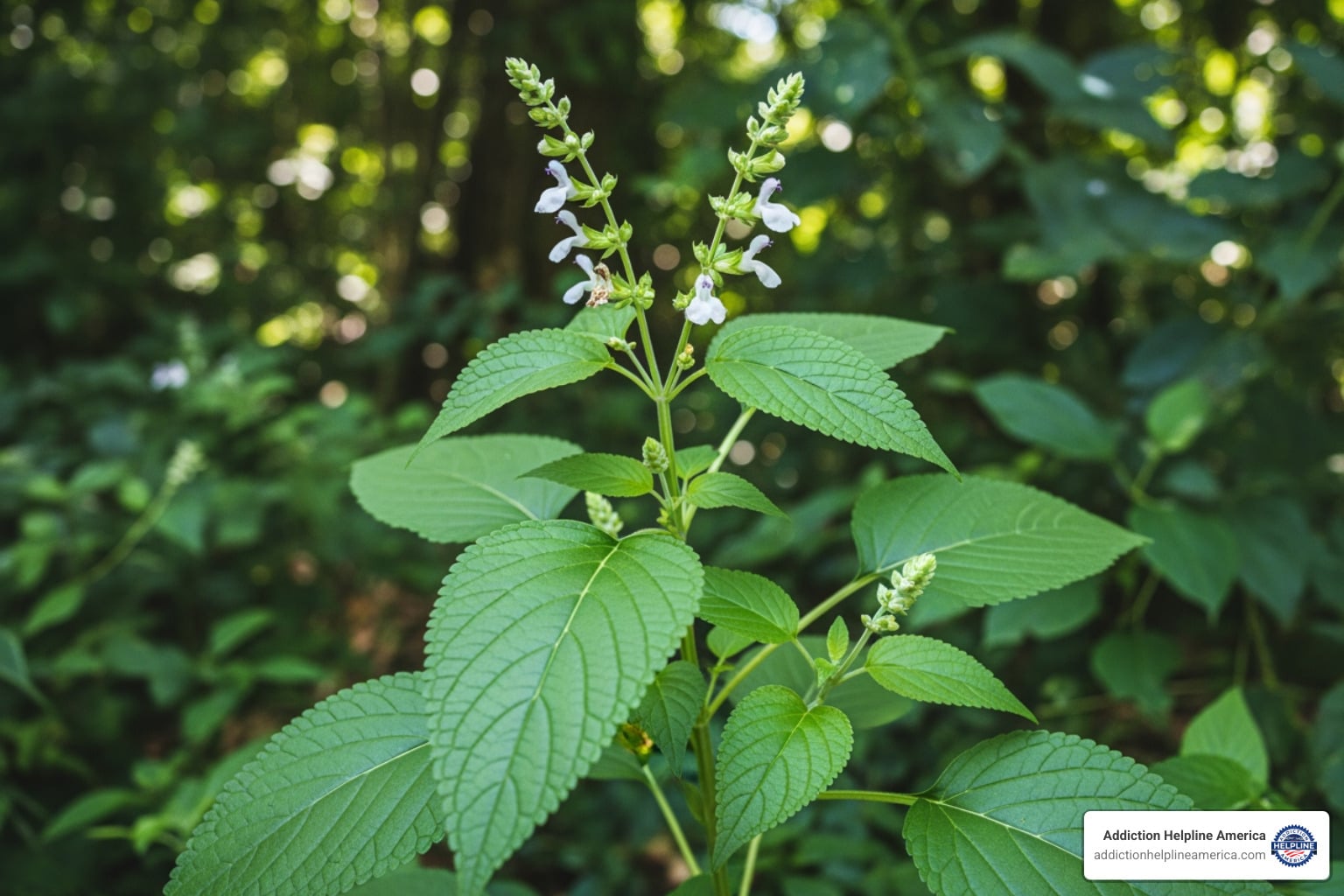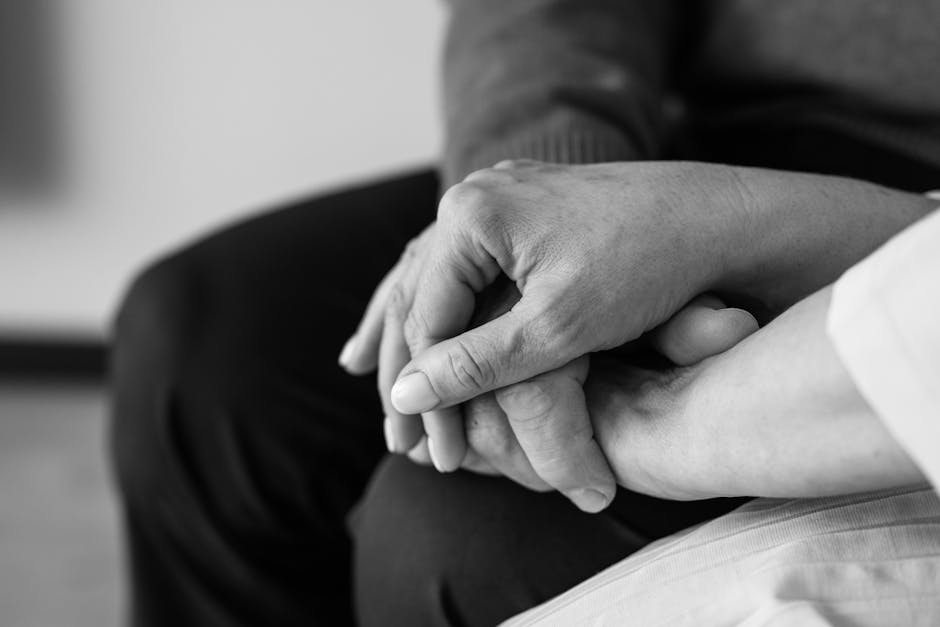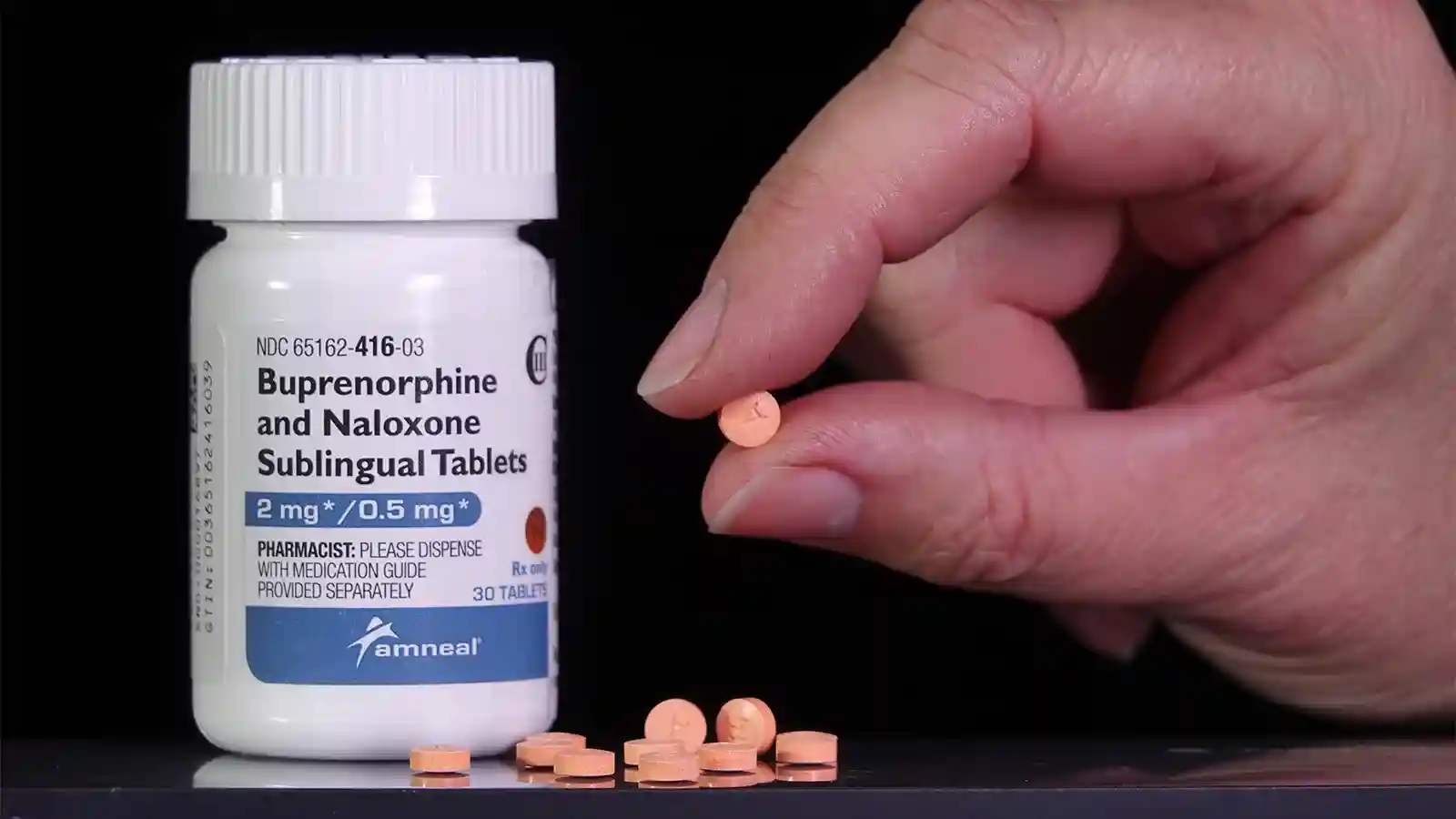
So, let’s get straight to the question that’s likely on your mind: Can you die from heroin withdrawal? The answer isn’t a simple yes or no, and it’s crucial to understand the distinction. While the withdrawal process itself isn’t typically fatal in the same way that, say, alcohol withdrawal can be, the complications that spin out of it absolutely can be lethal.
It’s a dangerous misconception to think that because withdrawal isn’t a direct cause of death, it’s safe to go through alone. Nothing could be further from the truth.
The Honest Answer to Heroin Withdrawal Risks
Think of it this way: the withdrawal itself doesn’t kill you, but the chaos it unleashes on your body can. When someone suddenly stops using heroin, their system goes into a state of shock. The most immediate and violent symptoms are often severe vomiting and relentless diarrhea.
This isn’t just a day or two of feeling sick. It can be a relentless, body-wracking ordeal that quickly leads to severe dehydration. Your body starts losing fluids and essential electrolytes faster than you can possibly replace them. This is where the real danger begins.
The Domino Effect of Complications
Dehydration is the first domino. Once it falls, it triggers a cascade of life-threatening problems.
Your heart, for instance, relies on a delicate balance of electrolytes like sodium and potassium to beat correctly. When that balance is thrown off by dehydration, it can lead to dangerous electrolyte imbalances. This can cause severe cardiac arrhythmias or even outright heart failure, especially if you have any underlying heart issues. The physical stress alone puts an incredible strain on your entire cardiovascular system.
“The core danger lies not in the withdrawal process itself, but in the severe, preventable complications that arise from it. Understanding this distinction highlights why attempting to detox without professional medical support is an unnecessary and life-threatening gamble.”
Another major risk is aspiration. When you’re vomiting uncontrollably, it’s frighteningly easy to accidentally inhale some of that stomach content into your lungs. This can trigger a nasty lung infection called aspiration pneumonia, which can be fatal, particularly when your body is already weakened and struggling.
Direct vs. Indirect Risks of Heroin Withdrawal
To make this crystal clear, it’s helpful to separate the withdrawal process from the complications it can cause. The process itself won’t stop your heart, but the severe side effects absolutely can if they aren’t managed by a medical team.
| Risk Factor | Direct Fatality Risk (From Withdrawal Process Itself) | Indirect Fatality Risk (From Unmanaged Complications) |
|---|---|---|
| Withdrawal Syndrome | Very low. Unlike alcohol or benzos, the process itself is not considered directly fatal. | High. The cascade of symptoms creates a medical emergency. |
| Dehydration | Not a direct risk of the syndrome, but a primary consequence. | Very High. Leads to electrolyte imbalances, organ failure, and shock. |
| Cardiac Events | Not a direct risk. | High. Severe stress and electrolyte imbalance can cause heart arrhythmias or failure. |
| Aspiration Pneumonia | Not a direct risk. | Moderate to High. Inhaling vomit can lead to a fatal lung infection. |
This table shows why professional supervision is so critical. A medical team isn’t just there for comfort; they are actively preventing these indirect, but very real, fatal risks.
This critical difference is why we stress that getting professional help isn’t just a good idea—it’s a matter of life and death. You can find more details on opiate withdrawal risks and their underlying mechanisms. In a medical detox facility, professionals can administer IV fluids to stop dehydration, provide medications to ease symptoms, and monitor your vitals 24/7 to intervene before a complication becomes a tragedy.
Call Now – Your Journey to Recovery Begins Today!

Take the first step towards a healthier life! Call now to connect with our compassionate team and start your recovery journey today. Your path to healing awaits!
Our recovery specialists are available 24/7 to provide support, and all calls are confidential and free. Reach out anytime – we’re here to help!
What Does Heroin Withdrawal Actually Feel Like? A Timeline
Going through heroin withdrawal is one of the toughest things a person can endure. Knowing what’s coming can take away some of the fear and help you prepare for the challenge ahead. Think of it as the worst flu you could ever imagine, but with a whole layer of intense psychological distress piled on top.
The timeline isn’t the same for everyone, but it generally follows a predictable pattern. Let’s walk through it, step by step.
The First 24 Hours: The Storm Brews
The first signs that something is wrong usually start within 6 to 12 hours after the last dose. It creeps up on you, often feeling like you’re just coming down with a bad cold or flu.
You might feel a rising sense of anxiety or find you can’t sit still. Your nose starts running, your eyes water, and you can’t stop yawning. Then, the muscle aches begin to set in—a deep, radiating pain that feels like it’s in your bones. Getting comfortable is impossible, and sleep is the last thing on your mind as your body and brain start screaming for the drug they’ve come to depend on.
This is just the beginning.
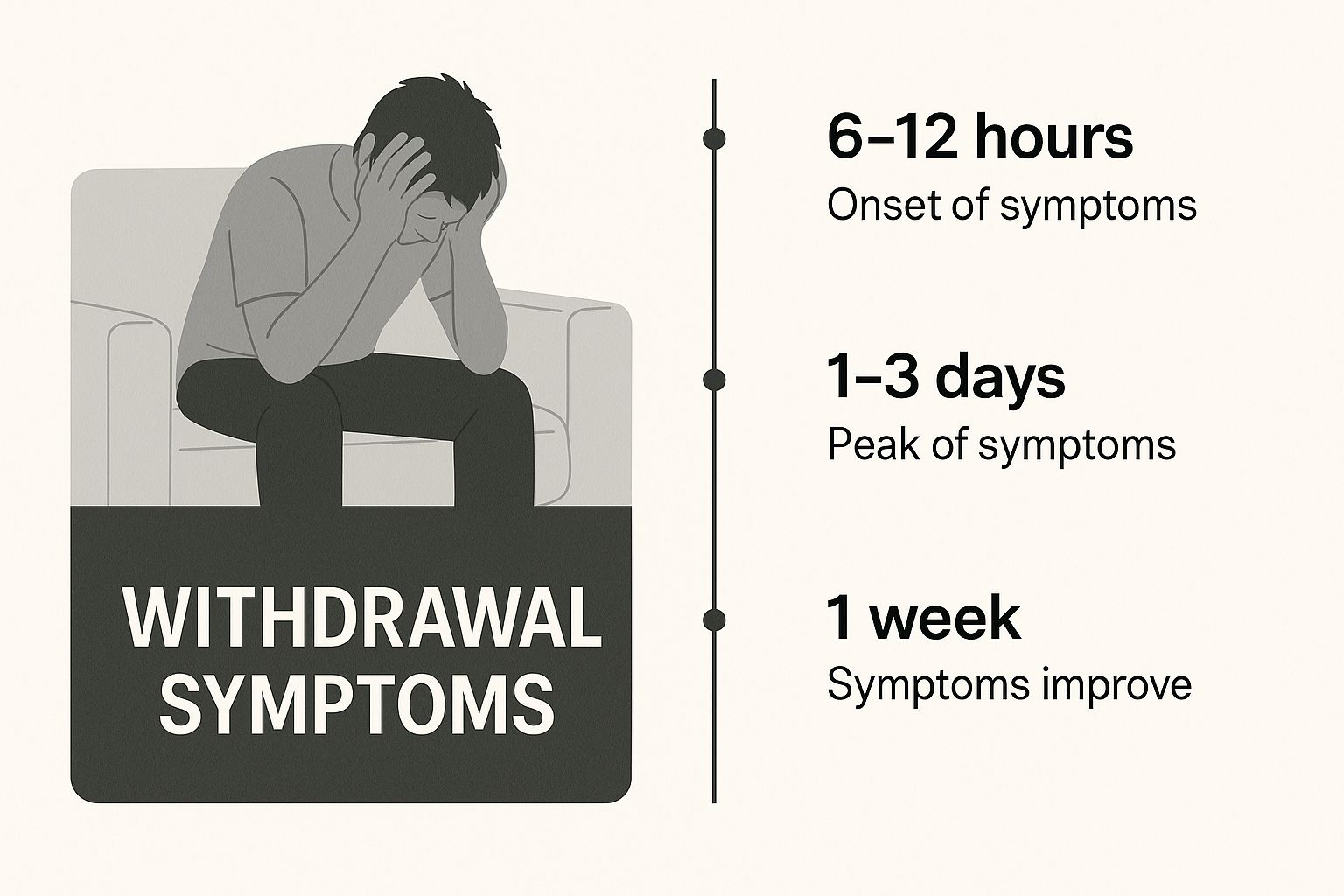
As the infographic shows, what starts as mild discomfort quickly spirals into a full-blown physical and emotional crisis as your body fights to find its balance again.
Days 1 to 3: The Peak of the Crisis
This is the hardest part. Between 24 and 72 hours, the withdrawal symptoms hit their peak. Everything you felt in the first day gets dialed up to an unbearable level, and new, more severe symptoms join the fight.
During this peak, most people experience:
- Constant Nausea and Vomiting: It can be so relentless that keeping even a sip of water down feels like an impossible task.
- Violent Diarrhea and Abdominal Cramps: The cramping can be agonizing, leading to serious fluid loss.
- Sweating, Shakes, and Chills: Your body loses its ability to regulate temperature. One minute you’re drenched in sweat, the next you’re shivering uncontrollably.
- Crushing Anxiety and Despair: The mental and emotional pain can be just as bad, if not worse, than the physical symptoms. A profound sense of hopelessness often takes hold.
“This is the danger zone. The intense physical stress from vomiting and diarrhea can lead to severe dehydration and electrolyte imbalances, putting a massive strain on the heart. This is precisely why trying to “tough it out” alone is so risky.”
Getting through these few days is a monumental challenge. It’s when the body is most vulnerable and professional medical oversight is absolutely critical to manage symptoms and prevent a true medical emergency.
The First Week and Beyond: The Fog Begins to Lift
After about 72 hours, you’ll likely notice the most severe physical symptoms starting to ease up. You’ve made it through the worst of the physical storm, but you’re not out of the woods yet.
For the rest of the first week and sometimes into the second, you’ll probably still feel incredibly weak, drained, and just plain sick.
Lingering issues often include:
- Goosebumps and chills that come and go
- General achiness and profound fatigue
- Stomach cramps and little to no appetite
- Difficulty sleeping through the night
While the acute physical symptoms fade, the psychological battle often intensifies. This is where Post-Acute Withdrawal Syndrome (PAWS) can emerge, bringing waves of anxiety, depression, mood swings, and powerful cravings that can last for weeks or even months. This next phase of recovery is its own journey.
Getting a clear picture of the entire process is key. For an even deeper look, you can learn more about how long it takes to detox from heroin in our other guide. The more you know, the better prepared you’ll be for the road ahead.
How Withdrawal Complications Can Turn Deadly
While heroin withdrawal feels terrible, the actual danger isn’t the discomfort itself. It’s the cascade of medical emergencies that the symptoms can set off. Trying to go through this alone is like navigating a minefield blindfolded; one wrong step can trigger a devastating chain reaction.
So, can you die from heroin withdrawal? The real answer lies in these secondary complications. Think of the intense vomiting and diarrhea as the spark. In a body already weakened by substance use, that spark can ignite a full-blown medical crisis. It’s not a direct attack, but rather a systemic collapse that can happen frighteningly fast without the right support.
This is where the line between “miserable” and “life-threatening” becomes crystal clear. The sheer physical toll can push the body past its breaking point, turning what could be a manageable process in a medical setting into a fatal event at home.
The Dangers of Dehydration and Electrolyte Imbalance
The most immediate and dangerous threat is severe dehydration. The non-stop vomiting and diarrhea force fluids and essential minerals out of the body at an alarming rate. This is so much more than just feeling thirsty; it’s a critical loss of the very resources your body needs to keep running.
This rapid fluid loss sends your body’s chemistry into a tailspin. Your system depends on a delicate balance of electrolytes—minerals like sodium and potassium—to manage everything from muscle function to your heartbeat. When that balance is gone, your most important organ, the heart, is immediately put in jeopardy.
An electrolyte imbalance can trigger cardiac arrhythmias, which means the heart starts beating erratically—too fast, too slow, or just irregularly. For a body already under incredible stress, this can quickly escalate to cardiac arrest or complete heart failure, especially if someone has an underlying heart condition they don’t even know about.
Aspiration Pneumonia: A Silent Killer
Another serious risk that comes from uncontrollable vomiting is aspiration pneumonia. This happens when someone accidentally inhales vomit into their lungs. In a state of pure exhaustion and weakness, the body’s natural reflex to protect the airway can easily fail.
Once stomach acid and bacteria get into the lungs, it can cause a severe and fast-moving infection.
This is not just a chest cold. It’s a serious medical emergency where the lungs fill with fluid, making it difficult or even impossible to breathe. Without immediate antibiotics and respiratory support in a hospital, aspiration pneumonia can become fatal, particularly when the body’s immune system is already stretched thin.
“Fatalities linked to opioid dependence more commonly arise from overdose or complications during withdrawal (like dehydration or cardiac events) due to unmanaged vomiting or diarrhea.”
This point is critical. While withdrawal itself isn’t typically considered a direct cause of death, its complications absolutely are. The real dangers are these secondary events, which are almost entirely preventable with proper medical care.
The Overwhelming Strain on the Entire Body
Beyond a specific crisis like a heart attack or pneumonia, the cumulative stress of unmanaged withdrawal can simply be too much for the body to handle. It’s a full-system assault that pushes every organ to its absolute limit.
Think about the domino effect:
- Kidney Strain: Severe dehydration drastically reduces blood flow to the kidneys, which can lead to acute kidney injury or even failure.
- Skyrocketing Blood Pressure: The immense stress and pain can cause a dangerous spike in blood pressure, dramatically increasing the risk of a stroke.
- Mental Health Crisis: The extreme anxiety, panic, and despair are not just feelings—they can lead to irrational behavior or self-harm, adding yet another layer of risk to an already dangerous situation.
All of this is why trying to detox “cold turkey” at home is such a terrible gamble. A medical detox center is equipped to manage these symptoms before they spiral out of control. Staff can provide IV fluids to stop dehydration, give medications to calm the body and mind, and monitor vital signs around the clock.
Understanding how these dangers work is the first step toward safety. For a full picture of what to expect, take a look at our complete guide to heroin withdrawal symptoms and timeline. This knowledge helps show why professional medical help isn’t just for comfort—it’s an essential safeguard against a potentially fatal outcome.
Call Now – Your Journey to Recovery Begins Today!

Take the first step towards a healthier life! Call now to connect with our compassionate team and start your recovery journey today. Your path to healing awaits!
Our recovery specialists are available 24/7 to provide support, and all calls are confidential and free. Reach out anytime – we’re here to help!
Why Medical Detox Is The Safest Way To Withdraw
Once you understand just how quickly withdrawal complications can turn life-threatening, it becomes crystal clear: trying to go it alone is a dangerous, unnecessary gamble. The safest path forward is medically supervised detox. This process is specifically designed to manage symptoms, head off complications, and create a safe, compassionate bridge to recovery.
This isn’t just about being more comfortable. It’s about survival.
Attempting to detox “cold turkey” at home is like trying to navigate a hurricane in a rowboat. You’re isolated, exposed, and completely unprepared for the life-threatening waves of symptoms that can hit. A medical facility, on the other hand, is like a sturdy ship with an expert crew, equipped with everything needed to get you through the storm safely.
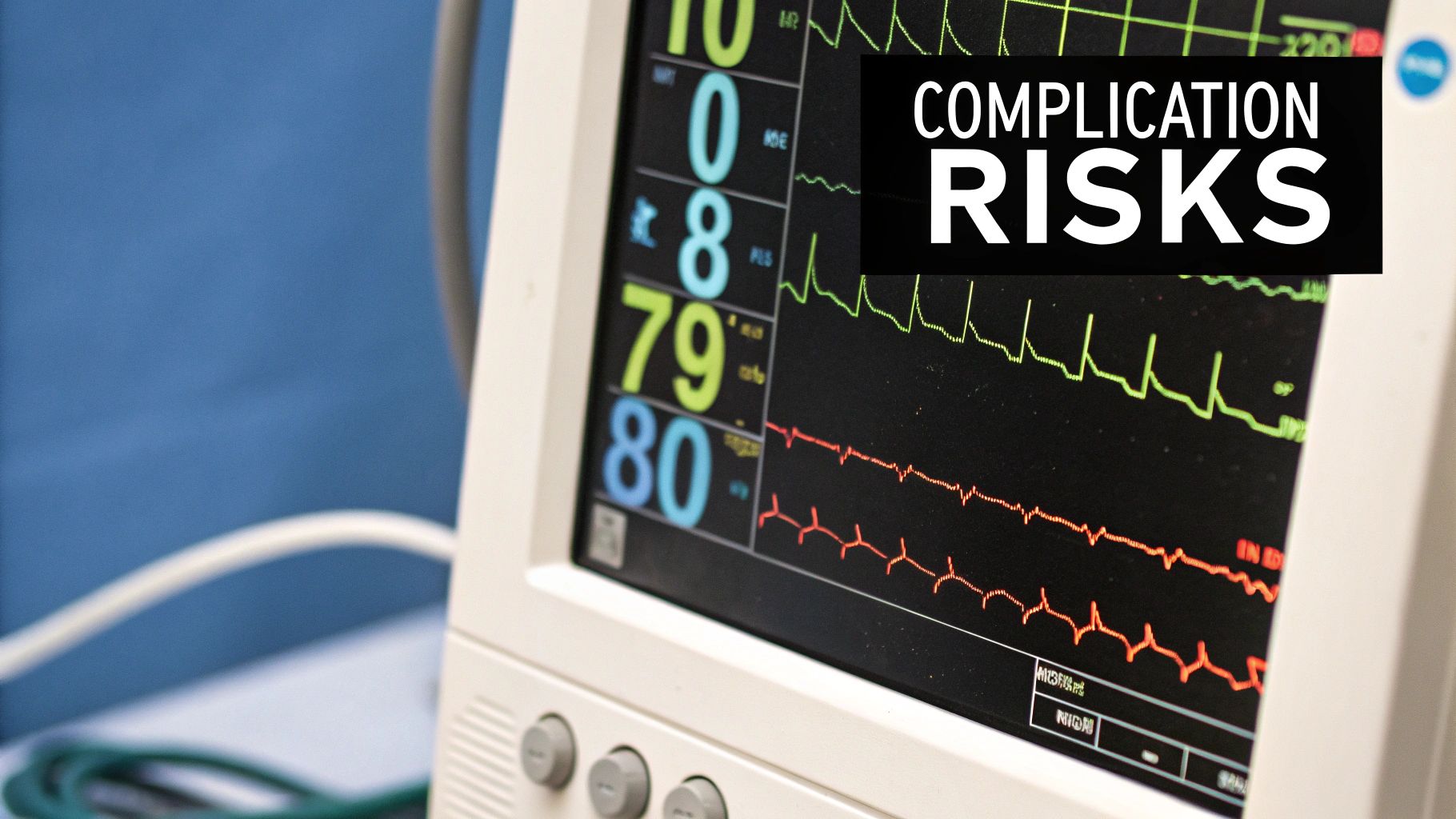
This controlled, supportive environment is the standard of care for a good reason—it all but eliminates the risk of dying from the complications of heroin withdrawal.
Constant Medical Monitoring and Support
The cornerstone of a safe detox is 24/7 medical monitoring. In a professional facility, a team of doctors and nurses is always watching your vital signs—heart rate, blood pressure, oxygen levels, and more. This isn’t just about checking boxes; it’s active crisis prevention.
If an electrolyte imbalance causes your heart rate to become erratic, the team can intervene immediately. If your blood pressure spikes to dangerous levels, they have the medication on hand to bring it back down. This constant vigilance catches problems the moment they start, long before they can snowball into a heart attack or stroke.
“A professional medical detox program is built to manage the severe physical and psychological symptoms of withdrawal. This drastically reduces the risk of life-threatening complications and makes the entire process more humane and effective.”
One of the most immediate dangers, severe dehydration, is managed proactively. Medical staff can administer intravenous (IV) fluids to replenish water and electrolytes, preventing that dangerous cascade of cardiac and kidney problems before they even begin. It’s a simple intervention that’s impossible to replicate at home, and it’s often a literal lifesaver.
Medications To Ease Symptoms and Cravings
Beyond just watching your vitals, a medical detox program uses specific, FDA-approved medications to make withdrawal far more bearable and, crucially, safer. The goal isn’t to trade one drug for another; it’s to use targeted medicine to stabilize your body and brain.
A few commonly used medications include:
- Buprenorphine (Suboxone): This medication gently activates opioid receptors in the brain, which does wonders to reduce cravings and dial down the intensity of withdrawal symptoms. It offers relief without the high, making it a powerful tool for getting stable.
- Clonidine: Often used to tackle the physical misery of withdrawal, clonidine helps calm down an overactive nervous system. This means less anxiety, agitation, muscle aches, sweating, and cramping.
- Comfort Medications: Professionals can also use other medicines to target specific issues, like anti-nausea drugs for vomiting or non-addictive sleep aids for severe insomnia. Every medication used helps reduce the immense physical toll on your body.
When you compare detoxing alone to doing it under professional care, the difference in safety and support is night and day.
Comparing Detox Environments: At Home vs. Medical Facility
| Feature | Detoxing at Home (‘Cold Turkey’) | Medically Supervised Detox |
|---|---|---|
| Medical Supervision | None. You are completely on your own. | 24/7 monitoring by doctors and nurses. |
| Symptom Management | Limited to over-the-counter aids, which are often ineffective. | Access to FDA-approved medications like buprenorphine and clonidine to ease symptoms and cravings. |
| Emergency Response | No immediate help. A 911 call may be too late. | Instant medical intervention for complications like seizures or cardiac arrest. |
| Hydration & Nutrition | Difficult to manage due to vomiting; high risk of dehydration. | IV fluids and nutritional support are provided to prevent dehydration and electrolyte imbalances. |
| Psychological Support | Isolation can worsen anxiety, depression, and paranoia. | Access to counselors and therapists for emotional and mental health support. |
| Relapse Risk | Extremely high due to intense cravings and lack of support. | A controlled environment free of triggers, significantly reducing immediate relapse risk. |
The takeaway is clear: medically supervised detox provides a critical safety net that simply doesn’t exist when you try to go it alone.
Understanding how this critical first step fits into the bigger picture is key. To get a better sense of the full recovery journey, it helps to explore the role of detox in rehab and see how it builds the foundation for lasting change. By getting through the acute phase of withdrawal safely, you gain the physical and mental strength needed to truly engage with the next stages of treatment.
Navigating the Dangers After Detox
Getting through the acute phase of heroin withdrawal is a massive accomplishment, but it’s so important to understand that the danger doesn’t just disappear once the physical sickness fades. The truth is, the period right after detox is one of the most fragile times in the entire recovery process. This is when the risk of a fatal overdose is at its absolute highest.
That might sound backward. After all, your body is clean, and the worst of the physical fight is over. But that’s precisely what makes this time so treacherous.

The Overdose Risk From Lowered Tolerance
When someone is actively using heroin, their body builds up a tolerance. This means they need more and more of the drug just to get the same effect. The detox process essentially hits the reset button on this tolerance, bringing it back down to zero.
So, if a relapse happens, a person might tragically use the same amount they were used to before detox. For a system that’s no longer accustomed to the drug, this previously “normal” dose is now a catastrophic shock, often leading to respiratory depression and a fatal overdose.
“Detox isn’t just the end of physical dependence; it’s the beginning of a new, incredibly vulnerable chapter. Knowing that your old dose can now be lethal is a life-or-death piece of information.”
The statistics on this are chilling. From 1999 to 2023, nearly 162,000 people died from heroin overdoses in the United States alone. This number underscores the drug’s inherent danger, particularly now with the prevalence of synthetic opioids like fentanyl. This is exactly why preventing relapse after detox is the number one priority in any solid treatment plan.
Understanding Post-Acute Withdrawal Syndrome (PAWS)
Just as the risk of overdose skyrockets, a whole new set of challenges often begins to surface. This is what we call Post-Acute Withdrawal Syndrome (PAWS). While acute withdrawal is a brutal physical battle, PAWS is mostly psychological and emotional. Think of it as the brain’s long, slow journey to heal and rebalance itself after being altered by long-term substance use.
PAWS can show up as a frustrating mix of lingering symptoms that can stick around for weeks or even months. These often include:
- Intense Mood Swings: Abrupt shifts between feeling anxious, irritable, and deeply depressed.
- Chronic Insomnia: A real struggle to fall asleep or stay asleep.
- Pervasive Anxiety: A constant, underlying sense of dread or panic that’s hard to shake.
- Profound Lethargy: A deep, bone-deep exhaustion that makes even simple tasks feel monumental.
- Powerful Cravings: Sudden, overwhelming urges to use that can seem to come out of nowhere.
These symptoms aren’t a sign of weakness. They are a predictable, physiological response as the brain’s delicate chemistry works to find its equilibrium again. The real danger with PAWS is that the emotional rollercoaster can become a powerful trigger for relapse, especially when someone starts to feel like they’ll never be “normal” again.
Preparing for the Journey After Detox
Getting through this high-risk period successfully takes a solid plan and a strong support system. Detox is the first critical step, but it’s far from the last. Real, lasting recovery is built in the weeks and months that follow.
Being prepared means accepting that recovery is a marathon, not a sprint. It means having strategies ready to cope with the psychological hurdles of PAWS and the constant risk of relapse. For family and friends, this is when your support is more crucial than ever. Learning https://addictionhelplineamerica.com/how-to-help-someone-with-addiction/ involves understanding these post-detox dangers and encouraging continued professional care, like therapy, support groups, and medication-assisted treatment.
By anticipating these challenges and building a robust aftercare plan, you can dramatically reduce the risk of a fatal overdose and start paving the way for a healthy, sustainable future.
Common Questions About Heroin Withdrawal Safety
When you’re staring down heroin withdrawal, your mind is probably racing with questions. It’s a time filled with fear and a ton of uncertainty, and getting straight answers is what you need most. This section is here to cut through the noise and give you the clear, direct information you need to make the safest possible choice for yourself or someone you love.
The whole point is to make sure the most critical safety takeaways stick with you, so you can move forward with a bit more clarity and a lot less fear. Let’s dig into the questions that come up most often when facing this journey.
Is Heroin Withdrawal More Dangerous Than Alcohol Withdrawal?
People ask this a lot, and it’s a critical question. The best way to answer it isn’t by saying one is “worse,” but by understanding they’re dangerous in completely different ways. Both are serious medical emergencies that absolutely require professional oversight.
Alcohol withdrawal can be directly fatal. The process itself can trigger life-threatening events like grand mal seizures or a condition called delirium tremens (DTs), which can lead to cardiovascular collapse. It’s an immediate, high-stakes crisis where the central nervous system essentially goes into shock.
Heroin withdrawal, on the other hand, is dangerous because of its severe complications. As we’ve covered, the withdrawal itself isn’t typically the direct cause of death. But the relentless vomiting and diarrhea can lead to catastrophic dehydration and electrolyte imbalances, which can cause heart failure. The danger is indirect, but it’s just as real.
“Think of it this way: Alcohol withdrawal is like a sudden lightning strike—immediate and potentially lethal. Heroin withdrawal is more like a slow, devastating flood that wears away at your body’s foundation until it collapses. Both can be deadly, but they get there through different routes.”
How Long Does The Worst Part of Heroin Withdrawal Last?
For most people, the most intense, physically punishing phase of heroin withdrawal hits its peak somewhere between 24 and 72 hours after the last use. This is when the worst of the nausea, vomiting, muscle cramps, and diarrhea takes hold. It’s a miserable and debilitating window of time.
After that 3-day peak, the most severe physical symptoms usually start to ease up over the next week or so. But the journey is far from over.
Many people then slide into a longer, more drawn-out phase called Post-Acute Withdrawal Syndrome (PAWS). This is where the psychological and emotional symptoms can linger for weeks, or even months.
Common PAWS symptoms include:
- Nagging anxiety and irritability
- Deep depression and unpredictable mood swings
- Constant fatigue and low energy
- Frustrating insomnia and poor sleep
- Sudden, overwhelming cravings
Knowing about this full timeline is so important, because the mental battle of PAWS is a huge reason why people relapse.
Call Now – Your Journey to Recovery Begins Today!

Take the first step towards a healthier life! Call now to connect with our compassionate team and start your recovery journey today. Your path to healing awaits!
Our recovery specialists are available 24/7 to provide support, and all calls are confidential and free. Reach out anytime – we’re here to help!
Can Medications Really Help With Withdrawal Symptoms?
Yes, without a doubt. Medications are a cornerstone of a safe, effective, and humane detox process. They aren’t a “crutch”—they are essential medical tools that dramatically reduce suffering and prevent life-threatening complications. In a professional detox center, doctors use specific, FDA-approved medications to help stabilize your body and brain.
These medications work in a few key ways:
- They slash cravings and soften withdrawal. Medications like buprenorphine (a key ingredient in Suboxone) gently activate the same opioid receptors in the brain that heroin does, but without causing a high. This essentially fools the brain into thinking it’s getting what it wants, which dials down the intensity of withdrawal in a major way.
- They target specific physical symptoms. Doctors can also prescribe what are often called “comfort meds” to manage nausea, stop diarrhea, and soothe aching muscles. Drugs like clonidine are often used to calm an overactive nervous system, which helps with the anxiety, sweating, and restlessness.
- They provide a foundation for mental stability. By taking the edge off the worst physical misery, these medications free up your mental and emotional bandwidth. This allows you to actually start engaging with the psychological side of recovery.
Trying to go cold-turkey without this kind of medical support isn’t just more agonizing—it’s significantly more dangerous.
What Is The First Step If I Think Someone Needs Help?
If you suspect someone you care about is struggling with heroin addiction or is about to go through withdrawal, the single most important first step you can take is to seek professional help immediately. Please, do not try to manage this on your own. The risks are just too great.
Your first move should be to call an addiction treatment specialist or a dedicated helpline. These lines are staffed by trained professionals who can offer instant guidance, help you assess the situation, and connect you with treatment options in your area. They can walk you through the next steps and help you figure out how to approach the person with compassion. To see what’s out there, you can get help for drug addiction and find a path forward.
And most importantly, if the person is showing any signs of a medical emergency—like seizures, trouble breathing, chest pain, or is unresponsive call 911 right away. This isn’t a moment for hesitation. A quick call could save their life.
Our helpline is 100%
free & confidential
If you or someone you care about is struggling with drug or alcohol addiction, we can help you explore your recovery options. Don’t face this challenge alone—seek support from us.
Programs
Resources
Will my insurance
cover addiction
treatment?
We're ready to help
Find the best
drug or alcohol treatment
center
Are you or a loved one struggling with addiction? Call today to speak to a treatment expert.





